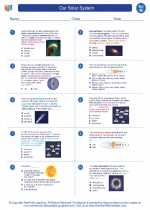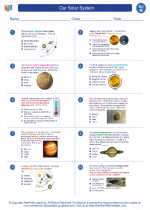Our Solar System -> pest control
Pest Control: An Overview
Pest control is the management and regulation of pests, which are organisms that are harmful to humans, animals, and the environment. Pests can include insects, rodents, birds, and other organisms that can cause damage or spread diseases.
Types of Pests
- Insects: Examples include ants, termites, cockroaches, and mosquitoes.
- Rodents: Common pests include rats and mice.
- Birds: Pigeons and sparrows are often considered pests, especially in urban areas.
- Weeds: Unwanted plants that compete with cultivated plants for nutrients and resources.
Methods of Pest Control
There are several methods used for pest control, including:
- Biological Control: This involves using natural predators or parasites to control pest populations.
- Chemical Control: The use of pesticides and other chemicals to kill or repel pests.
- Cultural Control: Practices such as crop rotation and proper waste management to reduce pest populations.
- Mechanical Control: Physical barriers or traps to prevent pests from entering or to capture and remove them.
- Integrated Pest Management (IPM): A holistic approach that combines multiple methods to control pests while minimizing environmental impact.
Environmental and Health Considerations
While pest control is important for protecting crops, structures, and public health, it's essential to consider the potential environmental and health impacts of pest control methods. For example, the use of certain pesticides can have harmful effects on non-target organisms and pollute water sources.
Study Guide
Key Concepts
- Define what pests are and provide examples of common pests.
- Explain the different methods of pest control, including biological, chemical, cultural, and mechanical control.
- Discuss the concept of integrated pest management (IPM) and its benefits.
- Consider the environmental and health considerations associated with pest control methods.
Review Questions
- What are the main types of pests that can cause harm to humans and the environment?
- Compare and contrast biological and chemical methods of pest control.
- How does integrated pest management differ from traditional pest control methods?
- Why is it important to consider the environmental and health impacts of pest control?
By understanding the importance of pest control and the various methods available, individuals can make informed decisions to manage pest populations while minimizing negative impacts on the environment and human health.
[Pest Control] Related Worksheets and Study Guides:
.◂Science Worksheets and Study Guides Eighth Grade. Our Solar System

 Worksheet/Answer key
Worksheet/Answer key
 Worksheet/Answer key
Worksheet/Answer key
